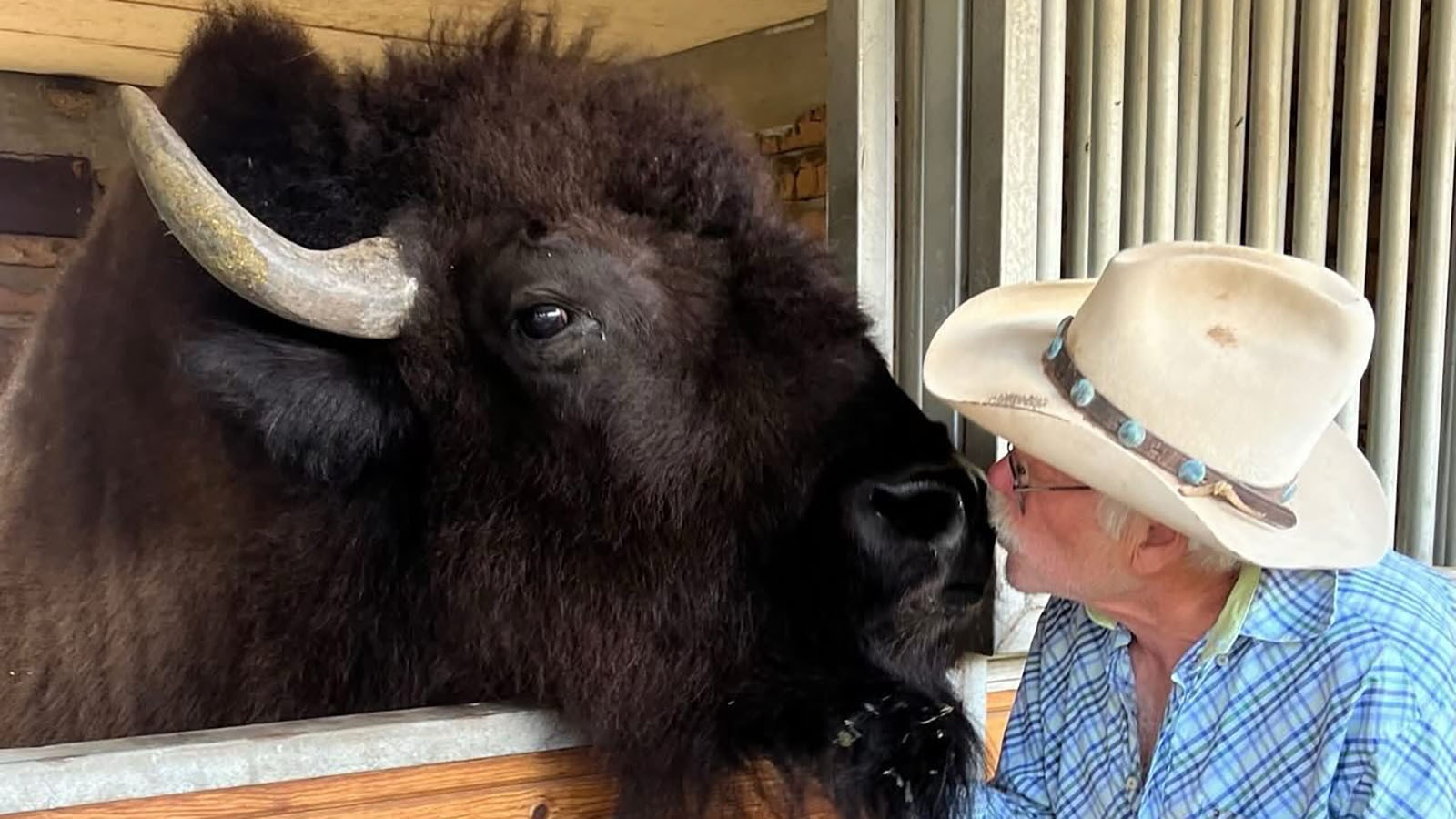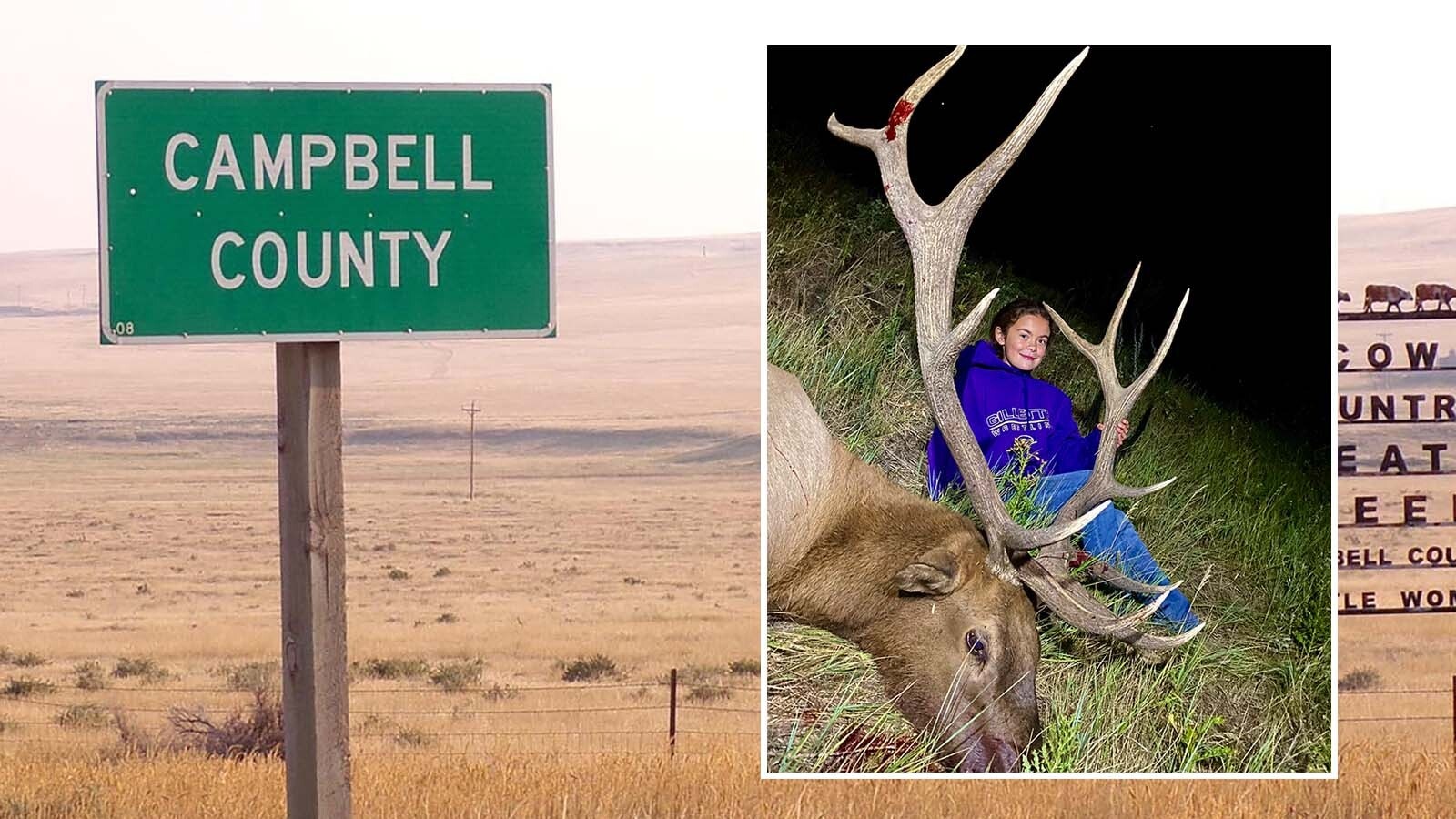An early elk migration out of the National Elk Refuge might be partly to blame for a plunge in revenue from this year’s elk antler auction in Jackson.
The national and worldwide demand for antlers might be temporarily waning, as well, auction organizers told Cowboy State Daily.
The annual antler auctions have consistently pulled in about $200,000 but this year’s auction generated roughly $109,000.
“So, about half” of what’s come to be expected, said Paul Vogelheim, president of the Jackson Hole Friends of Scouting.
Antler auction revenues have ebbed and flowed over the years. But such a dramatic nosedive in a single year has left organizers scratching their heads.
Vogelheim said organizers plan to meet and discuss the causes for the drop in sales.
He added that he plans to “circle back with some of our major buyers” to try finding out why interest in bulk antler purchases was lackluster this year.
Bulls Bailed Off The Refuge Early
Bull elk shed their antlers in late winter or early spring.
Each year in mid-April, local Boy Scouts are granted exclusive shed antler gathering access on the National Elk refuge near Jackson, which is run by the U.S. Fish and Wildlife Service (FWS).
Thousands of elk gather there during the winter and are given supplementary feed.
But warm spring weather came early this year, ahead of scouts going to the refuge to gather shed antlers on April 19, Vogelheim said.
“A lot of the bulls migrated off the refuge and on to the adjacent Forest Service land,” Vogelheim said.
“And can you believe it, they took their antlers with them. We need to have a talk with those guys,” he added whimsically.
That meant the Scouts’ take of antlers was smaller this year, about 6,200 pounds – compared to the typical haul of 7,000 to 8,000 pounds, Vogelheim said.

Yearly Tradition
The Jackson Hole Friends of Scouting aren’t directly affiliated with the national Boy Scouts and Girl Scouts organizations. They’re an all-volunteer local nonprofit that organizes the antlers auction to help support the elk refuge and Scout troops across Western Wyoming.
Proceeds from the antler auctions are split, with 75% going to the elk refuge and 25% going to the Scouts.
The antler auctions go back 58 years. For locals the auction is a sure sign of summer’s imminent arrival, said Patrick Starich, one of the event’s organizers and a past president of the Friends of Scouting.
The auction always happens on the Saturday before Memorial Day Weekend, taking place on May 17 this year.
Along with Jackson’s Old West Days “it’s a kick-off of the tourist season,” Starich said.
The mid-May weather in Jackson can be dicey. But it was pleasant this year, so “weather was not a factor” in the slump in sales, he said.
Bids Were Down
Despite the drop in volume of antlers, the overall quality was excellent, Vogelheim said.
“We had good quality over quantity,” he said.
However, bids were lower across the board, and there were fewer bulk buyers – the people or organizations that purchase entire pallets of antlers.
“Some major buyers didn’t come to town,” he said.
That might have been because of uncertainty about the economy, and the effects of changes in international tariffs, he said.
Elk antlers generally sell by the pound and are desired by buyers for numerous reasons.
Some people use them to make decorations or furniture. Others cut the antlers into chunks, which can be sold as dog chews.
In Asia, powder from ground elk antlers is said to have medicinal qualities, including as an aphrodisiac.
There might be a dip in that market, Vogelheim said.
He can recall numerous Asian buyers showing up at the auctions in years past, but not so many of them lately.
Starich said that recently, buyers have “been overwhelmingly from the United States.”
Antlers and products made from them are considered “a luxury,” and current skittishness about the economy might be driving down luxury purchases, Vogelheim said.
Starich noted that the overall number of bidders was down only slightly – 137 this year, compared to 140 in 2024.
Even European Mount Sales Slump
European mounts are usually big-ticket items but fetched low prices this year, Vogelheim said.
A European mount is an intact skull with the antlers attached. Either from an animal shot by a hunter or, in the case of the refuge elk, from an old bull that died of natural causes before shedding his antlers.
For a European mount to be highly desirable on the market, the skull must be thoroughly cleaned of all skin, tissue and hair.
That can be done by immersing the skull in boiling water for an extended period and then painstakingly scraping it clean.
Or it can be placed into soil full of hungry beetles, which will eat away all the flesh and hide.
Vogelheim, said the Friends of Scouting use the services of beetle keepers, at the cost of $300 per skull that the beetles strip clean.
There’s usually a big return on that investment, he said.
In the past, prime European mounts have gone for as much as $15,000 apiece.
This year, the highest price fetched by a European Mount was $1,700, he said.
And that was for a “B&C-class bull,” he said.
He was referencing the Boone & Crockett conservation organization’s measuring and scoring system – widely regarded as the gold standard for scoring big game trophies.
Mark Heinz can be reached at mark@cowboystatedaily.com.





